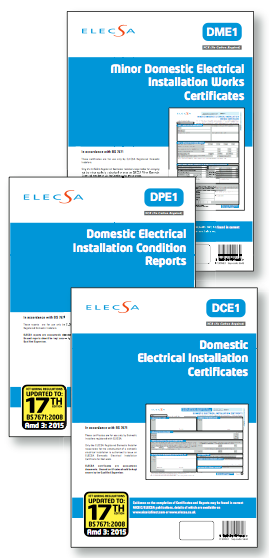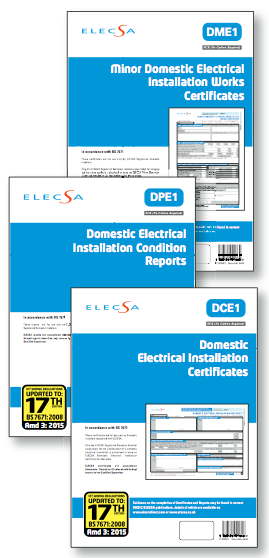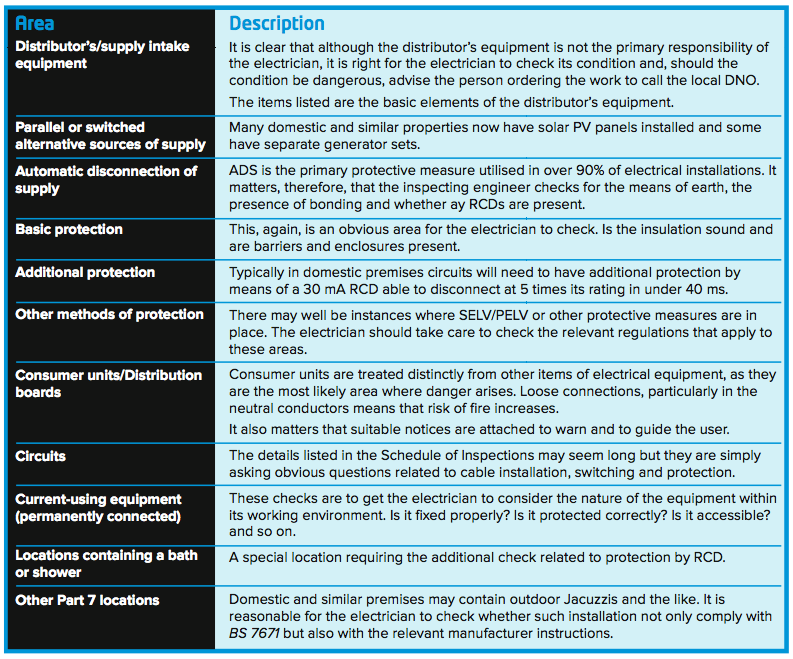There have always been changes to the way that electrical installations have been ‘certificated’. Back in the day, there were very few requirements other than to notify the local area board that an installation was ready for connection to the mains using a rather short certificate.

In the 14th Edition of the IEE Wiring Regulations, Section E required four sets of tests to be carried out in order:
- Verification of polarity,
- Tests of effectiveness of earthing,
- Insulation resistance tests, and
- Test of ring-circuit continuity.
After the inspection and tests were performed, a Completion Certificate was to be issued to the person ordering the work.


The Completion Certificate was a simple two-page document giving details of the installation, a date for a periodic inspection and test, and any particulars which were relevant to the installation, including the number of lighting points and socket-outlets. It was, as many of us will remember, a document that is far removed from the requirements of today.
The Inspection Certificate found in the 14th Ed was also a simple two-page document detailing the things the contractor was to look for during his/her inspection, including signs of overloading and insulation resistance values. Many of the older contractors may wonder why if things were so simple then, that we now need to have a range of certificates and long lists of items for inspection.
The reality is, of course, that the industry has developed over time and the Wiring Regulations have needed to change to remain in-step. The introduction of new products and technologies like solar PV and the like has required changes to be incorporated into both the Regulations and the inspection and testing documentation.
Current requirements
The current requirements of BS 7671 are that:
- For a new installation or the addition of a circuit to an existing installation, an Electrical Installation Certificate (EIC) should be issued (Regulation 631.1).
- For a periodic inspection and test, an Electrical Installation Condition Report (EICR) should be issued (Regulation 631.2).
- For the modification to or an addition to an existing circuit then a Minor Electrical Installation Works Certificate (MEIWC) should be issued (Regulation 631.3).
In addition to the requirement to issue either an EIC or an EICR, there is also a requirement to issue a Schedule of Inspection and a Schedule of Test Results (Regulations 631.1 and 631.2).
Whilst the MEIWC is relatively straightforward to use and consists of four parts – Description of minor works, Installation details, Essential tests and Declaration – the EIC and EICR are considerably more detailed.
It is also the case that Appendix 6 of BS 7671 has a separate Schedule of Inspections for domestic and similar installations having a rating not greater than 100 A. If we take a brief look at the schedule associated with the domestic and similar installation however, we should see that what is to be inspected is no more nor less than that which was previously required, it has simply taken all the areas that the conscientious electrician was already doing and used them as an aide-memoire to help all contractors to adequately check that an installation is sound and safe.
Summary
The development of the inspection schedule should be seen for what it is; an aid to the electrician as he/she seeks to ensure that all aspects of the installation have been inspected and are compliant with the current requirements of BS 7671.
Schedule of inspection – domestic and similar
The aim of the checklist in the schedule is to act as a guide to lead the electrician through the process.

- For other guidance and publications please see the ELECSA website.
- For information about the ELECSA schemes, visit www.elecsa.co.uk or call 0333 321 8220
